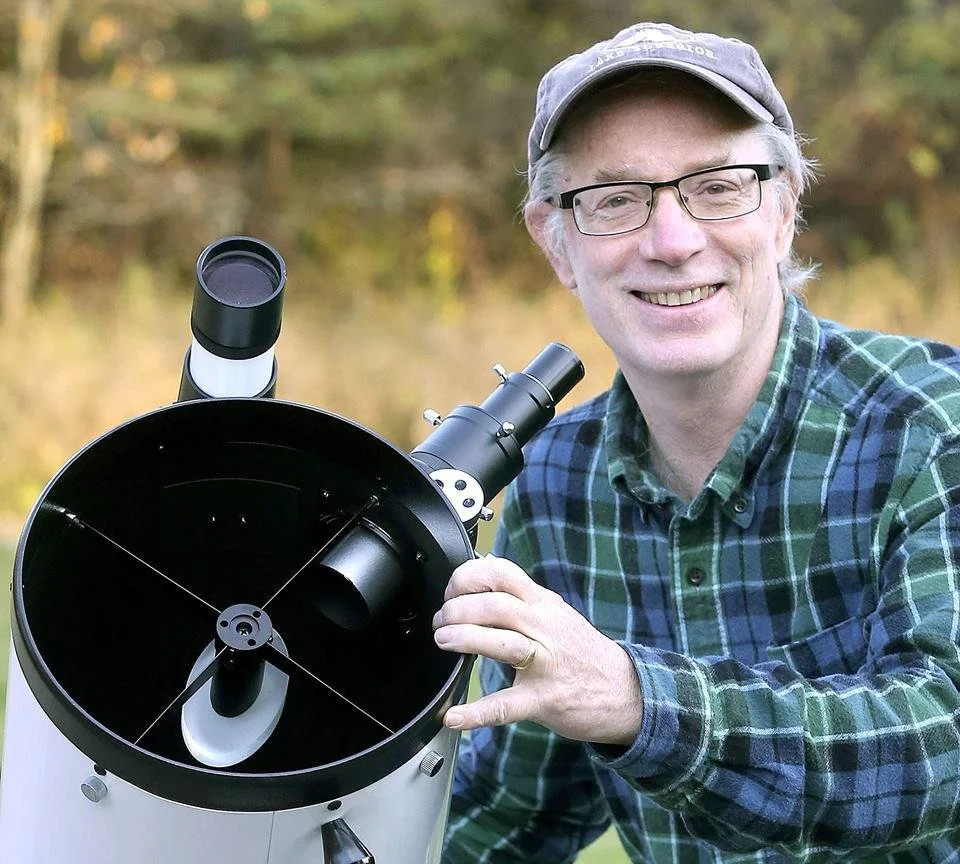January 2023 Night Sky Calendar
While it may be the coldest time of year, there are lots of reasons to poke your head out for a look at the night sky. Venus shines low in the southwest at dusk but gains altitude and gets easier to see as the month rolls along. On Jan. 22, it passes Saturn in a close conjunction that should look positively splendiferous in binoculars. As a bonus, the crescent moon joins the scene at the same time.
Mars slowly fades from magnitude -1.2 (a little fainter than Sirius, the brightest star) to -0.3, similar to Vega, as the faster Earth leaves it behind. Before the Red Planet dims too much, it has a very close conjunction with the moon on Jan. 30. Jupiter’s still a beacon in the,southwestern sky at nightfall, but Saturn is sinking fast and disappears in the twilight glow by month’s end.
The six bright stars that outline the Winter Hexagon asterism dominate the eastern sky during the early evening hours. To find this giant geometrical figure, face southeast around 8 p.m. local time and identify the three-stars-in-a-row in Orion’s Belt, then use the provided map.
Each of the six stars offers a starting point to identify its home constellation. Comet ZTF – named for the automated survey that found it, called the Zwicky Transient Facility – brightens into binocular and possibly naked-eye visibility during the latter part of January. Passing through the Little Dipper it will be visible all night.
Events:
Jan. 3 – Waxing gibbous moon shines near Mars tonight.
Jan 4 (after midnight) – Peak of the annual Quadrantid meteor shower. Under ideal conditions the “Quads” can produce around 100 meteors per hour that shoot out from under the Big Dipper’s handle. Unfortunately, the nearly full moon will mask all but the brightest. Best viewing time will be in the two hours before dawn from about 4-6 a.m. local time. Face southeast or north.
Jan. 6 – Full Wolf Moon
Jan. 14 – Last quarter moon
Jan. 18 (early dawn) – Crescent moon shines 2° to the left of Antares, brightest star in Scorpius
Jan. 21 – New moon
Jan. 21-23 – Venus and Saturn close approach and conjunction. Look low in the southwestern sky 45 minutes to an hour after sunset to spot Venus. On Jan. 21, Saturn will shine 1° above it. You might need binoculars to see Saturn. One night later, on Jan. 22, they’ll be closest − less than 1/2° apart. If you have an unobstructed horizon look for the super-thin crescent moon directly below the pair. On Jan. 23 the view will be almost as pretty, with the moon higher up and easier to see and Venus and Saturn 1.2° apart.
Jan. 25 – Crescent moon and Jupiter in conjunction. Look southwest during early evening hours.
Jan. 28 – First quarter moon
Jan. 25-31 – Comet ZTF (C/2022 E3) will cross the Little Dipper during the final week of the month. It’s expected to get bright enough to see in binoculars even from outer suburban areas. I’ll post details including finder maps in upcoming Astro Bob blogs. Just Google Astro Bob.
Jan. 30 – Waxing gibbous moon passes very close to Mars! From the Midwest they’ll be about one-third of a moon-diameter apart when closest around 11:30 p.m. Central Time. From parts of the southern U.S. (including much of Florida and sections of Louisiana, Texas, N. Mexico and California), the moon will cover up the planet. I’ll have additional information in an upcoming blog post. You’ll find a map and times here.
Bob King is an amateur astronomer, author, and passionate educator. He served as a photographer and photo editor at the Duluth News Tribune for 39 years and taught at the UMD planetarium. Bob’s work had a great impact on Voyageurs National Park. To achieve International Dark Sky Park certification, the park was required to host dark sky education events. Through the Night Sky Explorer webinars, the Conservancy was able to fulfill this component and help secure the certification for Voyageurs National Park. We can’t thank Bob King enough for sharing his talents and knowledge with the Conservancy community to support dark sky preservation.



